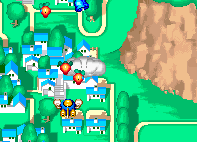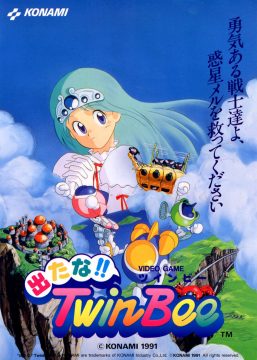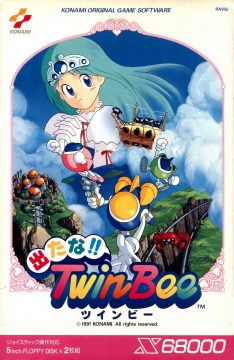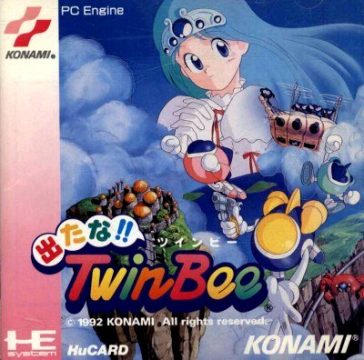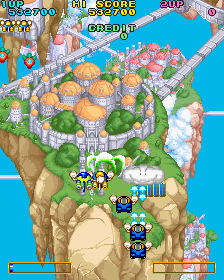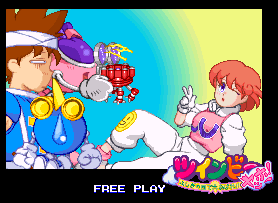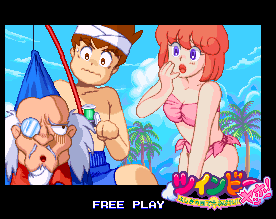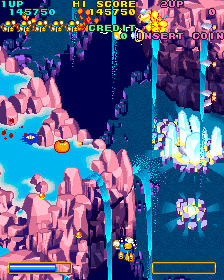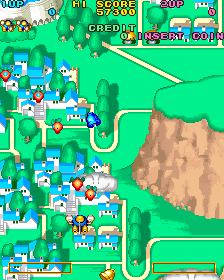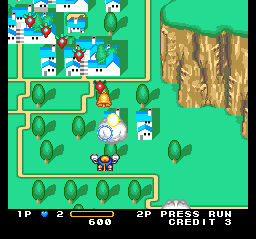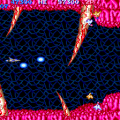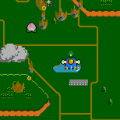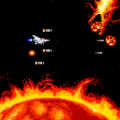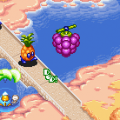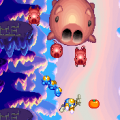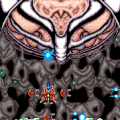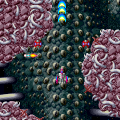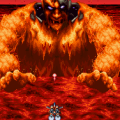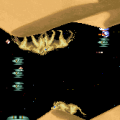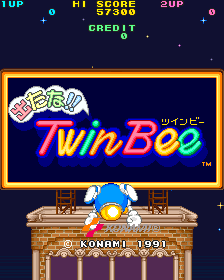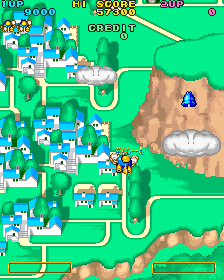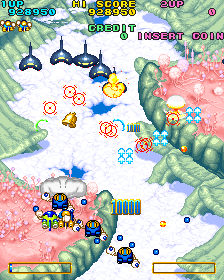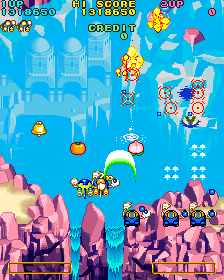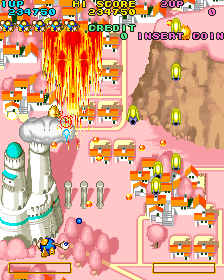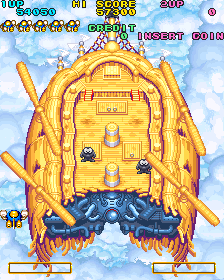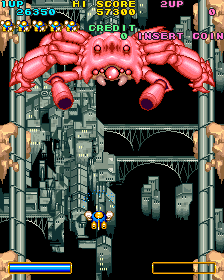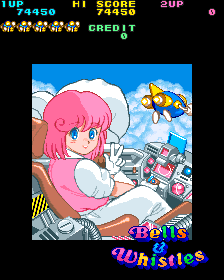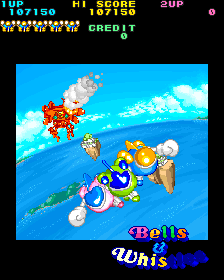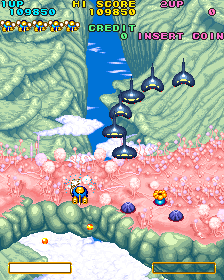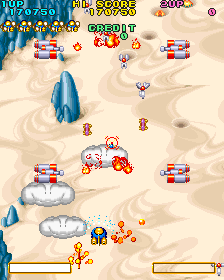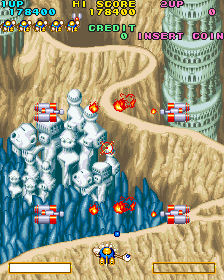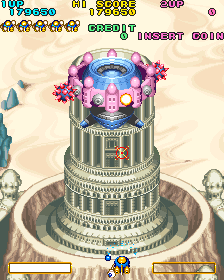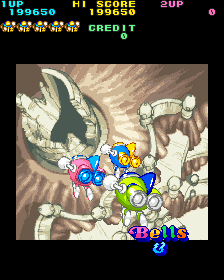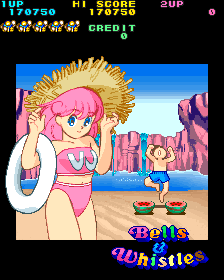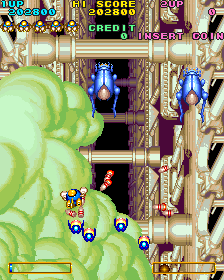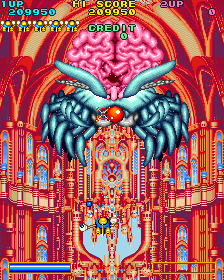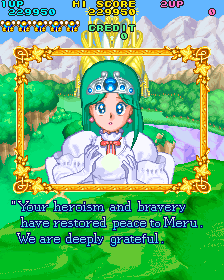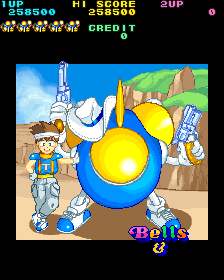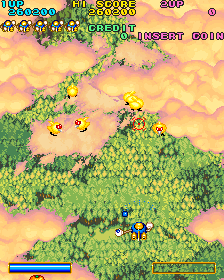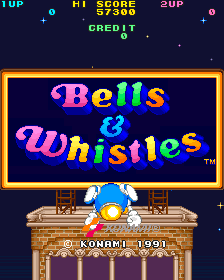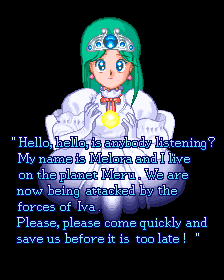Detana!! TwinBee is the game that defines the series. The idea behind TwinBee had always been an anime themed shooter. In 1991, Konami could finally realize that aspiration to the fullest thanks to 16-bit graphics. To that end, Konami hired Shuzilow.HA, a very gifted artist who had an impressive curriculum in anime. He is the creator of the heroes, the pilots of TwinBee, and WinBee, as well as other unforgettable characters in the universe.
More than anything else, it was Shuzilow’s incredible high quality work on the characters that shaped the future of the series: in a sense, Pastel, Light, & company became more popular than the game they “happened” to star in. The heroes became protagonists of an impressive range of different products, from a radio drama to an OVA series, to end with the idol career of Pastel’s voice actress, who did several audio CDs.
Just drawing a set of good characters isn’t enough, of course. The universe draws heavily from the anime culture of the 20th century. The most obvious source is Hayao Miyazaki’s masterwork Tenkuu no Shiro Laputa (known as Castle in the Sky in America). Anyone who has seen it will immediately recognize its influence in many of the screenshots.
While Miyazaki’s world is drawn upon for scenery, the characters live in a Toriyama-esque world. The whole “kids with uncle scientist and cute robot mascots” scenario is very reminiscent of Akira Toriyama’s Dr. Slump, one of the most successful manga/anime of the ’80s. Again, TwinBee wasn’t the only game series to use these elements: Dr. Cinnamon is almost a carbon copy of the more famous Dr. Light of Mega Man fame, and the buildings the scientists live in are classic “Capsule Corp.” houses, another of Toriyama’s inventions, seen in Dragonball. Each level ends with an eye-catch intermission, with the various heroes goofing off.
The game itself is quite the traditional vertical shooter, with seven stages of the cutest levels ever seen. Beyond the quaint villages and skybound castles (the theme music is named “Sky Fortress Laputa”, of course), you fly through caverns with floating waterfalls, an aquatic inspired landscape in the sky, and a series of ruins in the desert. Multiplane scrolling is put to good use to give a dizzying sense of depth.
The TwinBees now have a chargeable beam shot, but otherwise the mechanics are the same as the original TwinBee. The improved hardware does allow for larger and more impressive boss fights, and their design is more consistent than the random array of weirdos from TwinBee 3.
With so much effort spent on the conceptual graphics and overall design, it would have been a shame if the sound department hadn’t been on par. The trio of composers include Hidenori Maezawa, Masae Nakashima, and Michiru Yamane (one of the main composers of the Castlevania games). The music still shines brightly, with majestic, inspiring melodies. The squeaky, digitized voices of the Bees are cute, though almost indecipherable.
Detana!! TwinBee was originally released in the arcades, with an obscure English release called Bells & Whistles. It features translated text for the intro and ending, but removes some of the voice samples.
As for ports, it initially appeared on the PC Engine. This changes the screen layout to a standard 4:3 ratio, plus it adds a solid black status bar at the bottom of the screen. The graphics suffer a bit, having lost most of the scrolling effects. The music and sound effects aren’t as good either. Plus it’s missing the sixth stage, the desert ruins. The PC Engine version also appeared on the Wii Virtual Console and the PSN for PlayStation 3 and PSP .
The X68000 version pillarboxes the screen to give a similar (though not exact) screen ratio to the arcade game, and it looks and plays almost identically. It allows for three types of instrument sets based on the MIDI equipment, which isn’t quite as good as the arcade game, but still sounds great. It also uses the classic Gradius “Morning Music” theme as the disk loading song.
Both the PlayStation and Saturn received nearly arcade perfect versions on the Detaba TwinBee Yahho! Deluxe Pack. Unfortunately, neither includes a tate mode, so the closest you get is a stretched mode that pixelates the graphics. It’s also included on the TwinBee Portable pack for the PSP, which features a tate option where you hold the system sideways.
